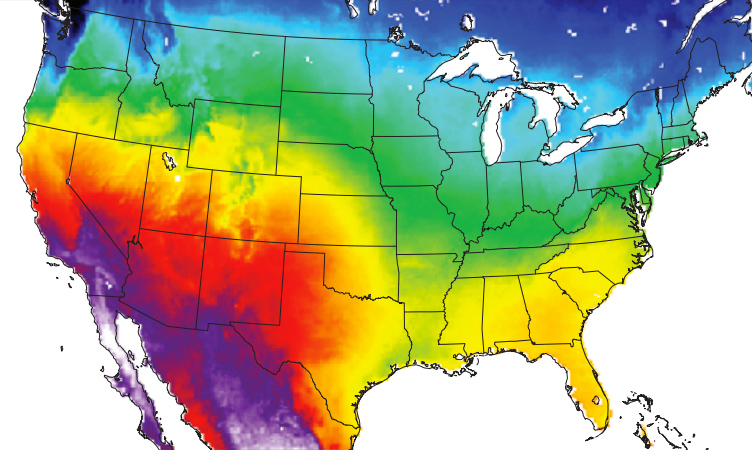
Two significant actions occurred in December 2015 – one global, one national – that signal enormous changes in the energy sector for 2016 and beyond.
First and foremost, 195 nations signed a global accord on climate change. When, you might reasonably ask, was the last time 195 nations agreed to anything? Called the “Paris Agreement,” its companion document, the Conference of Parties to the United Nations Climate Conference Framework Convention on Climate Change (or COP21), will be signed in April 2016. Fifty-five countries are working out their plans for compliance even as I write. (For the strongest coverage of all things COP21, see the work of BBC correspondent Matt McGrath).
The second action was the U.S. Congress’s passing, and President Obama’s signing, of the Consolidated Appropriations Act of 2016. That mammoth budget action includes the renewal of important renewable energy tax credit programs for wind and solar deployment and millions of dollars in funding for important energy research.
I use the word “signal” because of the powerful message sent by both of these actions, particularly to the private sector and industry, that the global de-carbonization of energy is already occurring and will continue to occur.
Message received, the global investment community has begun channeling capital out to businesses eager to participate in a clean energy economy.
More specifically, this will mean no less than billions of dollars in global investments for renewable energy deployment, distributed energy resources (DERs) advancement, and research and development (R&D) commitment to the energy technologies of the future.
The financial analyses coming out of places such as S&P Capital IQ of McGraw Hill also already indicate that the global energy market will greatly open up as a result of the COP21 agreement. In fact, a recent white paper estimated that we will need $16.5 trillion of investment in renewable energy, clean energy technology, and green finance over the next 15 years to reach the COP21’s greenhouse gas reductions.
But it’s also difficult to overstate the effects on the financial market of the U.S. Congress’s decision to extend federal investment tax credit (ITC) and federal production tax credits (PTC) for solar and wind energy. According to GTM research, for example, an estimated 25 gigawatts (GW) of solar energy will be installed by 2020 because of the ITC alone. That represents a whopping 54% increase over what would have been deployed without the extension.
Additionally, an estimated 19 GW of additional wind energy will be deployed because Congress extended the production tax credit (PTC). According to Bloomberg New Energy Finance, the growth in solar and wind together will bring in an estimated $73 billion to the U.S. economy by the time the credits expire, and will be the cheapest form of electricity in many U.S. states.
(The ITC is based on a percent of each energy project brought into service during any taxable year. The budget includes a phase down of the tax credit from 30% through 2019, 26% through 2020, 22% through 2021, and 10% after these years unless adapted by Congress. Separate tax credits exist for fuels cells, small wind, geothermal, microturbines, combined heat and power, and waste heat to power projects. The PTC also has a phase down of the credit from 100% value in 2015-16, 80% in 2017, 60% in 2018, 40% in 2019, ending in 2020.)
Aside from changes to the global energy market – consequences of both COP21 and U.S. federal tax credits – there is also the possibility of another promising change moving forward: increased international collaboration. Countries such as India are already calling for international collaboration on energy storage efforts that could assist in larger scale deployment of renewable energy. Let’s hope that this signal is heard as well, and that we see a sharp increase in global collaboration on research, technology innovation, and all strategies that could reduce greenhouse gases.
Implementing COP21

How will 195 nations implement their COP21 agreement actions in response to greenhouse gas reductions? “The devil is in the details,” as they say. The United States’ compliance response is linked closely to the Environmental Protection Agency’s (EPA) Clean Power Plan. The Obama Administration’s goal is to reduce power plant emissions by 32 percent under 2005 levels by 2030.
A recent study by the National Oceanic and Atmospheric Administration (NOAA) provides insights into the U.S. opportunity, stating that carbon dioxide emissions from the electricity sector could be reduced by 80 percent relative to 1990 levels without an increase in the levelized cost of electricity.
The study looks at data and modeling of weather variability – intermittency being a concern for solar and wind energy – and proposes a new system of transcontinental transmission lines using high voltage direct current that in theory would connect wind and solar farms around the country. Though this is not the only idea out there for achieving improved renewable energy penetration and transmission (local, small scale distributed grids provide another potential way forward), it does provide a potentially bold new way forward. The study’s authors note that transforming the electrical power system in this way by 2030 would be the equivalent of building the transcontinental railroads of the nineteenth century and the interstate highway of the twentieth century. A huge undertaking, for sure. But the study’s concept could expand the discussion of how to move forward with climate change solutions in the U.S. For those interested in the NOAA study, see also this interesting commentary from Stanford University professor Mark Z. Jacobson.

